How to Install macOS on a Windows PC
Part 1 of 8:
Preparing to Install
-
 Check your computer's specifications. Your Windows computer must have an Intel i5 or i7 processor in order to run macOS High Sierra, as well as a minimum of two gigabytes of RAM. To check these specs:
Check your computer's specifications. Your Windows computer must have an Intel i5 or i7 processor in order to run macOS High Sierra, as well as a minimum of two gigabytes of RAM. To check these specs:- Open Start .

- Type in system information.
- Click System Information at the top of the menu.
- Look at the name of the processor to the right of the "Processor" heading.
- Scroll down and look at the number to the right of the "Installed Physical Memory" heading.
- Open Start
-
 Check your computer's BIOS type. Next to the "BIOS Mode" heading in the System Information menu, check to see whether it says "UEFI" or "BIOS". Keep this information in mind for later.
Check your computer's BIOS type. Next to the "BIOS Mode" heading in the System Information menu, check to see whether it says "UEFI" or "BIOS". Keep this information in mind for later.- You can exit System Information after this point.
-
 Determine your computer's bit type. There are two types of computer: 32-bit, and 64-bit. Your computer must be able to support 64-bit operation in order to install macOS.
Determine your computer's bit type. There are two types of computer: 32-bit, and 64-bit. Your computer must be able to support 64-bit operation in order to install macOS. -
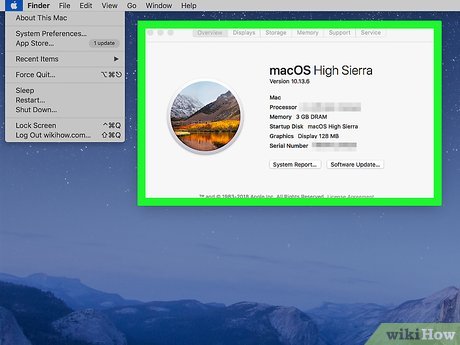 Make sure you have access to a recent model of Mac. The Mac in question must be able to download macOS High Sierra.
Make sure you have access to a recent model of Mac. The Mac in question must be able to download macOS High Sierra.- If your Mac can't run macOS High Sierra, you'll need to use a Mac which can.
-
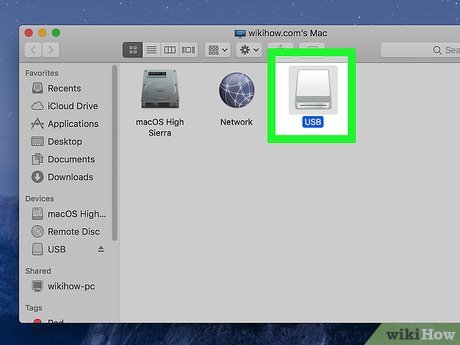 Gather the required equipment. In order to install macOS High Sierra on your Windows computer, you will need the following hardware:[1]
Gather the required equipment. In order to install macOS High Sierra on your Windows computer, you will need the following hardware:[1]- USB drive - Find a flash drive that can hold at least 16 gigabytes.
- Blank hard drive - Find a USB external hard drive that holds at least 100 gigabytes (this is where you'll install your macOS stuff, so the bigger, the better).
- USB-C adapter - If you're working with a Mac that doesn't have traditional USB ports, you'll need a USB-C-to-USB-3.0 adapter.
Part 2 of 8:
Downloading Unibeast
-
 Go to the Unibeast download site on a Mac. Go to https://www.tonymacx86.com/. Make sure you do this on a Mac, since the folder will download the wrong app if you do this on a Windows computer and try to transfer it over to a Mac.
Go to the Unibeast download site on a Mac. Go to https://www.tonymacx86.com/. Make sure you do this on a Mac, since the folder will download the wrong app if you do this on a Windows computer and try to transfer it over to a Mac. -
 Click Log in or Register. It's in the upper-right side of the page. A menu will appear at the top of the page.
Click Log in or Register. It's in the upper-right side of the page. A menu will appear at the top of the page. -
 Enter your email address. Do so in the "Email address" field. Make sure this is an email address that you can easily access—you'll need to log in and verify the email address later.
Enter your email address. Do so in the "Email address" field. Make sure this is an email address that you can easily access—you'll need to log in and verify the email address later. -
 Check the "No, create an account now" box. It's near the bottom of the menu.
Check the "No, create an account now" box. It's near the bottom of the menu. -
 Click Sign up. Doing so takes you to the Create an Account page.
Click Sign up. Doing so takes you to the Create an Account page. -
 Enter the required information. Fill out the following fields:
Enter the required information. Fill out the following fields:- Name — Enter the name you want to use for your account.
- Password — Enter a password you'd like to use for the login.
- Confirm Password — Repeat the password you entered above.
- Date of Birth — Select the month, day, and year of your birth.
- Location — Type in your country's name.
-
 Check the "I agree to the terms and rules" box. It's near the bottom of the page.
Check the "I agree to the terms and rules" box. It's near the bottom of the page. -
 Click Sign up. This button is at the bottom of the page. Doing so creates your account and sends a confirmation email to your provided email address.
Click Sign up. This button is at the bottom of the page. Doing so creates your account and sends a confirmation email to your provided email address. -
 Go to your email inbox. Go to the email address that you selected for your account. You may have to log in with your email address and the email account's password to open the inbox.
Go to your email inbox. Go to the email address that you selected for your account. You may have to log in with your email address and the email account's password to open the inbox. -
 Open the confirmation email. Click the email from "tonymacx86.com" to open it.
Open the confirmation email. Click the email from "tonymacx86.com" to open it. -
 Click the confirmation link. Click the link below the "Confirm Account" text in the middle of the email. This will take you back to the Unibeast download site.
Click the confirmation link. Click the link below the "Confirm Account" text in the middle of the email. This will take you back to the Unibeast download site. -
 Double-click the Downloads tab. It's on the right side of the row of tabs that's near the top of the page. The Downloads page should open.
Double-click the Downloads tab. It's on the right side of the row of tabs that's near the top of the page. The Downloads page should open.- If you just see a drop-down menu appear, click the Downloads tab once more.
-
 Scroll down and click Unibeast. Make sure you click the version of Unibeast that has the highest number next to it.
Scroll down and click Unibeast. Make sure you click the version of Unibeast that has the highest number next to it.- For example, the current release of Unibeast as of May 2018 is 8.3.2.
-
 Click Download Now. It's in the top-right corner of the page. Doing so will download Unibeast onto your Mac.
Click Download Now. It's in the top-right corner of the page. Doing so will download Unibeast onto your Mac. -
 Download Multibeast. This program, which is hosted on the same site as Unibeast, will allow you to install drivers so that you can use things like your PC's speakers, the Internet, and so on:
Download Multibeast. This program, which is hosted on the same site as Unibeast, will allow you to install drivers so that you can use things like your PC's speakers, the Internet, and so on:- Double-click the Downloads tab again.
- Click Multibeast - High Sierra 10.2.0
- Click Download Now in the upper-right corner of the page.
Part 3 of 8:
Downloading the macOS High Sierra Installer
-
 Open your Mac'sApp Store. Click the App Store app icon, which is blue with a white "A" on it, in your Mac's Dock.
Open your Mac'sApp Store. Click the App Store app icon, which is blue with a white "A" on it, in your Mac's Dock.
-
 Click the search bar. It's in the upper-right side of the App Store window.
Click the search bar. It's in the upper-right side of the App Store window. -
 Search for High Sierra. Type high sierra into the search bar, then press ⏎ Return.
Search for High Sierra. Type high sierra into the search bar, then press ⏎ Return. -
 Click Download. It's to the right of the High Sierra icon. Doing so will prompt the installer to begin downloading onto your Mac.
Click Download. It's to the right of the High Sierra icon. Doing so will prompt the installer to begin downloading onto your Mac. -
 Wait for the installer window to open. Once it does, you'll need to close it immediately.[2]
Wait for the installer window to open. Once it does, you'll need to close it immediately.[2] -
 Press ⌘ Command+Q when the window opens. This will close the installer window.
Press ⌘ Command+Q when the window opens. This will close the installer window. -
 OpenFinder. Click the blue face-like icon in your Mac's Dock.
OpenFinder. Click the blue face-like icon in your Mac's Dock.
-
 Click the Applications folder. It's on the left side of the Finder window.
Click the Applications folder. It's on the left side of the Finder window. -
 Make sure that the installer is there. The installer will be called "Install macOS High Sierra" or something similar and will have an image of a ridge of mountains on it. As long as the installer is present in the Applications folder, you can proceed.
Make sure that the installer is there. The installer will be called "Install macOS High Sierra" or something similar and will have an image of a ridge of mountains on it. As long as the installer is present in the Applications folder, you can proceed.- If the installer isn't there, try downloading High Sierra again.
Part 4 of 8:
Formatting Your USB Drive
-
 Plug your USB drive into your Mac. This is the 16-gigabyte minimum flash drive that you'll use to install macOS High Sierra on your computer.
Plug your USB drive into your Mac. This is the 16-gigabyte minimum flash drive that you'll use to install macOS High Sierra on your computer.- If your Mac doesn't have traditional USB ports on it, attach your USB-C to USB-3.0 adapter first.
-
 Open Spotlight. Click the magnifying glass icon in the top-right corner of the screen. A search bar will open.
Open Spotlight. Click the magnifying glass icon in the top-right corner of the screen. A search bar will open.
-
 Type disk utility into Spotlight. This will search your Mac for the Disk Utility app.
Type disk utility into Spotlight. This will search your Mac for the Disk Utility app. -
 Click Disk Utility. It's below the Spotlight search bar. Doing so will open Disk Utility.
Click Disk Utility. It's below the Spotlight search bar. Doing so will open Disk Utility. -
 Select your USB drive. Click the USB drive's name in the upper-left side of the window.
Select your USB drive. Click the USB drive's name in the upper-left side of the window. -
 Click the Erase tab. It's near the top of the window. A pop-up box will appear.
Click the Erase tab. It's near the top of the window. A pop-up box will appear. -
 Click the "Format" drop-down box. You'll find this in the middle of the pop-up box. Clicking it prompts a drop-down menu.
Click the "Format" drop-down box. You'll find this in the middle of the pop-up box. Clicking it prompts a drop-down menu. -
 Click OS X Extended (Journaled). This will set your USB drive's file system to that of your Mac.
Click OS X Extended (Journaled). This will set your USB drive's file system to that of your Mac. -
 Click the "Scheme" drop-down box. It's below the "Format" drop-down box.
Click the "Scheme" drop-down box. It's below the "Format" drop-down box. -
 Click GUID Partition Map. This option is in the "Format" drop-down menu.
Click GUID Partition Map. This option is in the "Format" drop-down menu. -
 Click Erase. Doing so will reformat your USB drive to your Mac's file system.
Click Erase. Doing so will reformat your USB drive to your Mac's file system. -
 Click Done when prompted. You can now proceed with creating your installation drive.
Click Done when prompted. You can now proceed with creating your installation drive.
Part 5 of 8:
Creating the Unibeast Installation Tool
-
 Open the Unibeast folder. Double-click the Unibeast folder to unzip and open it.
Open the Unibeast folder. Double-click the Unibeast folder to unzip and open it. -
 Open Unibeast. Double-click the Unibeast PKG file to open it.
Open Unibeast. Double-click the Unibeast PKG file to open it. -
 Click Open when prompted. Doing so will open the Unibeast setup window.
Click Open when prompted. Doing so will open the Unibeast setup window.- If your Mac is currently running macOS Sierra or higher, you'll have to verify the Unibeast installation before continuing.
-
 Click Continue four times. It's in the bottom-right corner of the first four pages of the Unibeast setup window.
Click Continue four times. It's in the bottom-right corner of the first four pages of the Unibeast setup window. -
 Click Agree when prompted. It's at the top of the window.
Click Agree when prompted. It's at the top of the window. -
 Select your USB drive, then click Continue. Click the USB drive's name to select it.
Select your USB drive, then click Continue. Click the USB drive's name to select it. -
 Select High Sierra, then click Continue. You should see High Sierra in the middle of the page.
Select High Sierra, then click Continue. You should see High Sierra in the middle of the page. -
 Select a motherboard type. Depending on whether your Windows computer has a UEFI- or a BIOS-type motherboard, your choice will vary:
Select a motherboard type. Depending on whether your Windows computer has a UEFI- or a BIOS-type motherboard, your choice will vary:- UEFI — Click UEFI Boot Mode, then click Continue.
- BIOS — Click Legacy Boot Mode, then click Continue.
-
 Select a graphics card option if necessary, then click Continue. Check the box next to Inject [card name] for your preferred graphics card settings.
Select a graphics card option if necessary, then click Continue. Check the box next to Inject [card name] for your preferred graphics card settings.- If your graphics card supports macOS High Sierra by default, skip this step.
-
 Click Continue. It's in the bottom-right corner of the page. Doing so will prompt you to enter your Mac's password.
Click Continue. It's in the bottom-right corner of the page. Doing so will prompt you to enter your Mac's password. -
 Enter your Mac's password. Type in the password you use to log into your Mac.
Enter your Mac's password. Type in the password you use to log into your Mac. -
 Click OK. This will prompt Unibeast to begin installing to the USB drive. Once the installation process is complete, your USB drive will be ready to install macOS High Sierra on your PC. While the Unibeast installation finishes up, you should change your Windows computer's boot order.
Click OK. This will prompt Unibeast to begin installing to the USB drive. Once the installation process is complete, your USB drive will be ready to install macOS High Sierra on your PC. While the Unibeast installation finishes up, you should change your Windows computer's boot order.
Part 6 of 8:
Changing Windows Boot Order
-
 Unplug any USB items from your Windows computer. Make sure that you don't have any USB drives, in particular.
Unplug any USB items from your Windows computer. Make sure that you don't have any USB drives, in particular. -
 Enter your computer's BIOS or UEFI settings page. This process varies from computer to computer, but you will typically restart your computer and then repeatedly press a key (e.g., Del) immediately as the computer begins to start up.
Enter your computer's BIOS or UEFI settings page. This process varies from computer to computer, but you will typically restart your computer and then repeatedly press a key (e.g., Del) immediately as the computer begins to start up. -
 Locate the "Boot Order" section. This section is normally on the main page of the BIOS, though you may need to use the arrow keys to navigate over to the "Boot" or "Advanced" tab.
Locate the "Boot Order" section. This section is normally on the main page of the BIOS, though you may need to use the arrow keys to navigate over to the "Boot" or "Advanced" tab.- The "Boot Order" section varies from BIOS to BIOS. If you can't find your BIOS' "Boot Order" page, consult your motherboard's manual or look up your computer model online to find direct instruction for your specific BIOS page.
-
 Select Removable Devices. Use the arrow keys to move the blinking bar down to Removable Devices.
Select Removable Devices. Use the arrow keys to move the blinking bar down to Removable Devices.- On some pages, this section may instead be called USB Devices or something similar (e.g., Peripherals).
-
 Move your selected location to the top of the list. Typically, you'll press the + key with the boot location you want to use selected until it's at the top of the "Boot Order" list.
Move your selected location to the top of the list. Typically, you'll press the + key with the boot location you want to use selected until it's at the top of the "Boot Order" list.- You can double-check the key that you're supposed to use in the legend that's usually on the right side or the bottom of the BIOS page.
-
 Save your settings and exit the BIOS. Look for the key you're supposed to press to save and exit in the legend on the right side of the page, then press it. Doing so will shift your Windows computer's boot priority so that installation USB drive will be selected as the boot point once you plug it in.
Save your settings and exit the BIOS. Look for the key you're supposed to press to save and exit in the legend on the right side of the page, then press it. Doing so will shift your Windows computer's boot priority so that installation USB drive will be selected as the boot point once you plug it in.- You may have to press another key to confirm this choice.
Part 7 of 8:
Installing macOS on Your PC
-
 Place Multibeast on the USB drive. Open the USB drive's folder, then drag the Multibeast file into the folder. You'll need to use Multibeast later, so having it on the flash drive will make using it when necessary as simple as possible.
Place Multibeast on the USB drive. Open the USB drive's folder, then drag the Multibeast file into the folder. You'll need to use Multibeast later, so having it on the flash drive will make using it when necessary as simple as possible. -
 Eject the Unibeast USB drive from the Mac. Open the Finder, then click the ⏏ Eject icon to the right of the USB drive's name in the upper-left corner of the Finder window. After doing so, you can remove your USB drive.
Eject the Unibeast USB drive from the Mac. Open the Finder, then click the ⏏ Eject icon to the right of the USB drive's name in the upper-left corner of the Finder window. After doing so, you can remove your USB drive.- You should make sure that the Unibeast installation is complete before doing this.
-
 Shut down your Windows computer. Press and hold the Power button on your Windows computer until your computer shuts down completely. This will usually occur one or two seconds after the computer's display turns off.
Shut down your Windows computer. Press and hold the Power button on your Windows computer until your computer shuts down completely. This will usually occur one or two seconds after the computer's display turns off. -
 Plug both the Unibeast USB drive and the blank hard drive into your computer. These should both fit into USB ports on your computer.
Plug both the Unibeast USB drive and the blank hard drive into your computer. These should both fit into USB ports on your computer. -
 Start your Windows computer. Press the Power button to start the computer. Once the computer has a chance to begin booting, it should select your plugged-in USB drive as a place from which to boot.
Start your Windows computer. Press the Power button to start the computer. Once the computer has a chance to begin booting, it should select your plugged-in USB drive as a place from which to boot. -
 Select your USB drive when prompted, then press ↵ Enter. This will begin the macOS installation process.
Select your USB drive when prompted, then press ↵ Enter. This will begin the macOS installation process. -
 Select a language, then click →. Doing so takes you to the next page of the installer.
Select a language, then click →. Doing so takes you to the next page of the installer. -
 Click Continue twice. It's in the bottom-right corner of the pages.
Click Continue twice. It's in the bottom-right corner of the pages. -
 Click Agree when prompted. You'll see this at the top of the screen.
Click Agree when prompted. You'll see this at the top of the screen. -
 Click the Utilities menu item. This menu item is in the top-left side of the screen. A drop-down menu will appear.[3]
Click the Utilities menu item. This menu item is in the top-left side of the screen. A drop-down menu will appear.[3] -
 Click Disk Utility. It's in the drop-down menu.
Click Disk Utility. It's in the drop-down menu. -
 Select the blank hard drive. Click the blank hard drive's name on the left side of the page.
Select the blank hard drive. Click the blank hard drive's name on the left side of the page. -
 Click the Erase tab. It's near the top of the page.
Click the Erase tab. It's near the top of the page. -
 Format the blank hard drive. Change the following fields:
Format the blank hard drive. Change the following fields:- Format — Click the drop-down box, then click Mac OS X Extended (Journaled)
- Scheme — Click the drop-down box, then click GUID Partition Map
-
 Click Erase. Doing so will reformat your blank hard drive for macOS' file system.
Click Erase. Doing so will reformat your blank hard drive for macOS' file system. -
 Click Done when prompted, then close the Disk Utility window. You can now proceed with installing macOS High Sierra on the hard drive.
Click Done when prompted, then close the Disk Utility window. You can now proceed with installing macOS High Sierra on the hard drive. -
 Click the blank hard drive's name, then click Continue. This will both select the hard drive as the installation point and begin installing macOS High Sierra.
Click the blank hard drive's name, then click Continue. This will both select the hard drive as the installation point and begin installing macOS High Sierra. -
 Wait for macOS High Sierra to finish installing. This process should take around 15 minutes.
Wait for macOS High Sierra to finish installing. This process should take around 15 minutes. -
 Follow the on-screen prompts. You'll be prompted to enter specific information, such as your name, a password, your preferred language, your location, and so on. Once you complete this setup process, macOS' software will be completely set up on your Windows computer.
Follow the on-screen prompts. You'll be prompted to enter specific information, such as your name, a password, your preferred language, your location, and so on. Once you complete this setup process, macOS' software will be completely set up on your Windows computer.
Part 8 of 8:
Enabling Drivers with Multibeast
-
 Open your flash drive. OpenFinder, then click the name of the flash drive from which you installed macOS High Sierra. This will open the flash drive's window in Finder.
Open your flash drive. OpenFinder, then click the name of the flash drive from which you installed macOS High Sierra. This will open the flash drive's window in Finder.
-
 Double-click the Multibeast file. Doing so will open the Multibeast window.
Double-click the Multibeast file. Doing so will open the Multibeast window. -
 Click the Bootloaders tab. It's at the top of the window.
Click the Bootloaders tab. It's at the top of the window. -
 Select the proper bootloader. Check the "Clover UEFI Boot Mode" box if you selected the UEFI boot mode for your motherboard during the Unibeast tool creation, or check the "Clover Legacy Boot Mode" box if you used legacy boot mode.
Select the proper bootloader. Check the "Clover UEFI Boot Mode" box if you selected the UEFI boot mode for your motherboard during the Unibeast tool creation, or check the "Clover Legacy Boot Mode" box if you used legacy boot mode. -
 Click the Drivers tab. You'll find this option at the top of the window.
Click the Drivers tab. You'll find this option at the top of the window. -
 Click Audio. It's on the left side of the window.
Click Audio. It's on the left side of the window.
3.8 ★ | 5 Vote
You should read it
- How to Unmount a Drive
- How to Transfer Data from a Flash Drive to a Computer
- A simple 'cure' for USB drive malfunctions
- How to Partition a Hard Drive in Windows 8
- How to download Google Drive to your computer and phone is simple and fast
- How to Remove a Flash Drive from a Windows 10 Computer
- How to Map a Network Drive
- How to Install Windows 7 Using Pen Drive
May be interested
- Free space on macOS Sierra with Optimize Storage
 in the newly released macos sierra, optimize storage feature will free up storage space on the device, when it can clean up the trash, remove unnecessary files, ...
in the newly released macos sierra, optimize storage feature will free up storage space on the device, when it can clean up the trash, remove unnecessary files, ... - How to create a MacOS Sierra installed USB drive 10.12
 finally, apple has released the macos sierra 10.12 official version. users can update the version directly or if you want to install macos sierra version 10.12, you can create the installer using usb.
finally, apple has released the macos sierra 10.12 official version. users can update the version directly or if you want to install macos sierra version 10.12, you can create the installer using usb. - Synchronize files and folders on Desktop and Document on macOS Sierra with iCloud
 one of the great features on macos sierra is the ability to use icloud drive better by syncing the files and folders found on the desktop and in the documents folder.
one of the great features on macos sierra is the ability to use icloud drive better by syncing the files and folders found on the desktop and in the documents folder. - How to Download and Install macOS on a Virtual Machine Using VirtualBox
 macos is very different from windows because this operating system has its own interface, features, application set, and programs. maybe you're considering buying a new computer so you want to try the macos operating system before deciding. you might also really want to try out some apps specific to this operating system. macos can be installed on a windows (or linux) computer using a virtual machine or as a dual boot. today's tipsmake will show you how to install macos on a virtual machine using virtualbox.
macos is very different from windows because this operating system has its own interface, features, application set, and programs. maybe you're considering buying a new computer so you want to try the macos operating system before deciding. you might also really want to try out some apps specific to this operating system. macos can be installed on a windows (or linux) computer using a virtual machine or as a dual boot. today's tipsmake will show you how to install macos on a virtual machine using virtualbox. - How to disable iTunes automatically launch on macOS Sierra
 if you install itunes on your mac, when you press play on the keyboard, or connect the headset and bluetooth speaker, itunes will automatically run. some people do not want itunes to automatically appear, can be adjusted right on the device.
if you install itunes on your mac, when you press play on the keyboard, or connect the headset and bluetooth speaker, itunes will automatically run. some people do not want itunes to automatically appear, can be adjusted right on the device. - How to install macOS from USB
 if you're having trouble installing macos or want to downgrade to an older version, using a bootable usb installer may be the best solution.
if you're having trouble installing macos or want to downgrade to an older version, using a bootable usb installer may be the best solution. - How to fix corrupted macOS installer errors
 creating a bootable macos installer on usb provides a convenient way to install a new copy of macos on multiple macs, while also allowing you to perform a 'clean' installation quickly and easily.
creating a bootable macos installer on usb provides a convenient way to install a new copy of macos on multiple macs, while also allowing you to perform a 'clean' installation quickly and easily. - Instructions on how to create a Windows 10 USB install on macOS
 detailed instructions on how to create a windows 10 installer on macos is extremely simple. tips to create a set of win 10 on macbook using boot camp assistant
detailed instructions on how to create a windows 10 installer on macos is extremely simple. tips to create a set of win 10 on macbook using boot camp assistant - Create USB to install Mac OS directly on Windows operating system
 your macbook is broken but you can't ask anyone who has a macbook to create a usb to install macos? in this article, hanoicomputer will guide you how to create a usb to install macos directly on windows.
your macbook is broken but you can't ask anyone who has a macbook to create a usb to install macos? in this article, hanoicomputer will guide you how to create a usb to install macos directly on windows. - How to clean install macOS 12 Monterey
 starting with macos 12 monterey, apple has added a feature to support users to restore factory settings to the device with just a few simple clicks, without having to reboot in the 'complicated' recovery mode as before. this.
starting with macos 12 monterey, apple has added a feature to support users to restore factory settings to the device with just a few simple clicks, without having to reboot in the 'complicated' recovery mode as before. this.



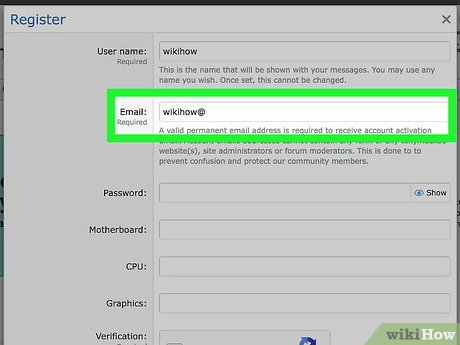


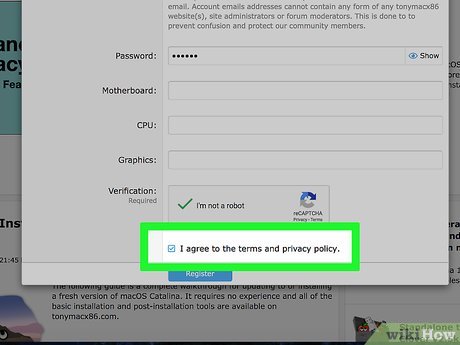




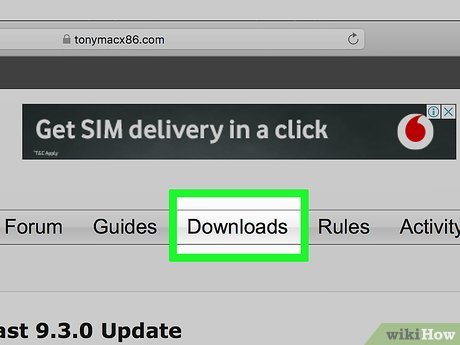





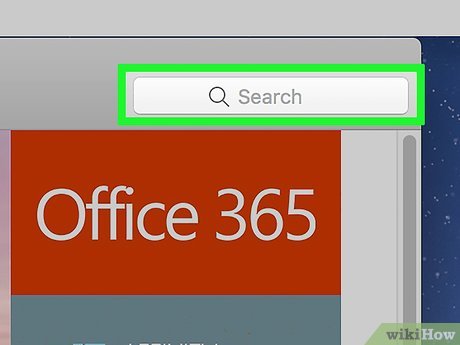


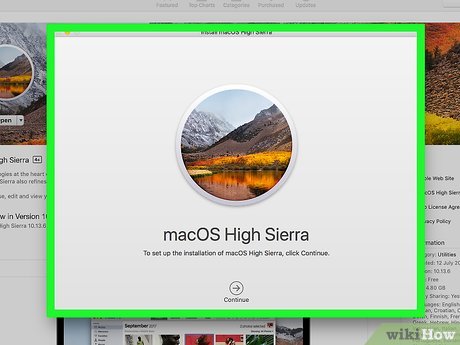





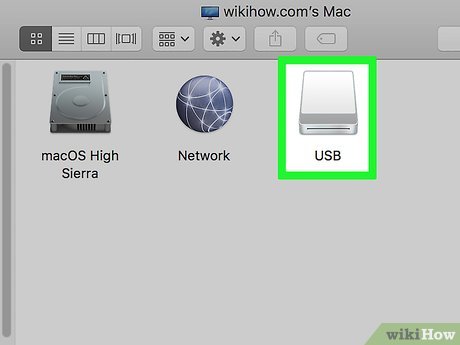







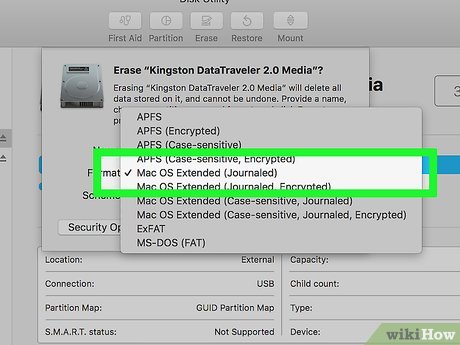
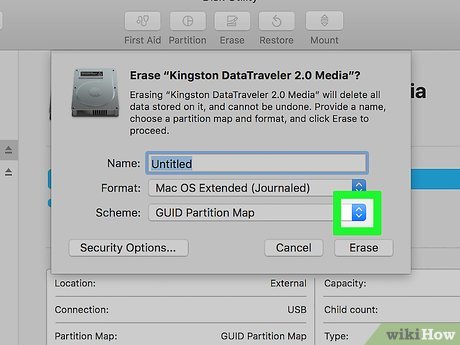
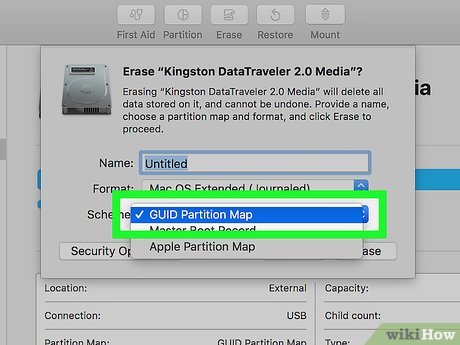





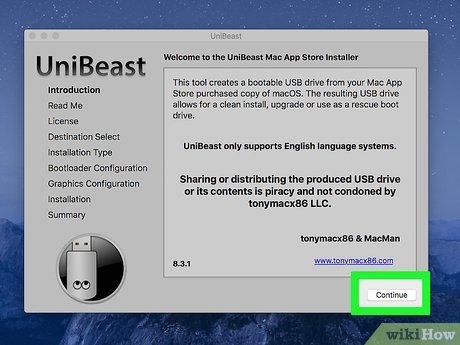





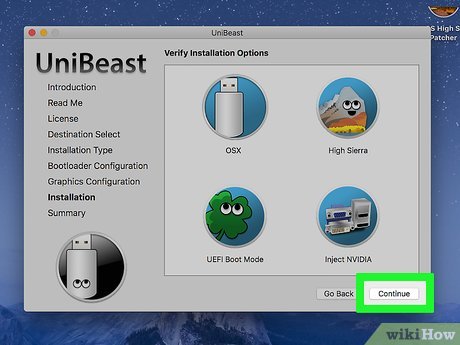
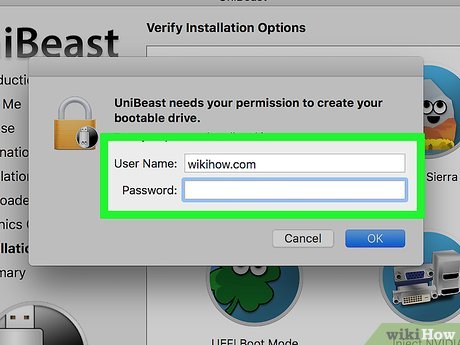






















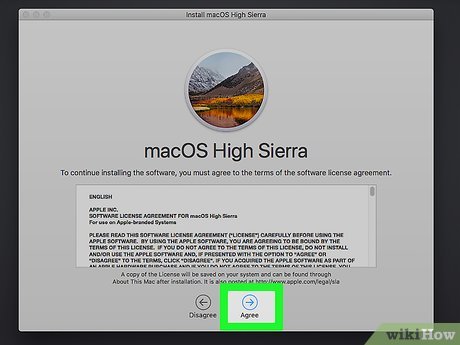
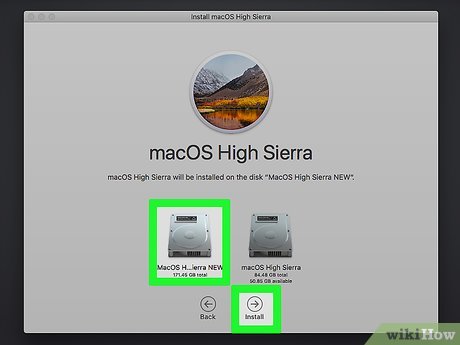




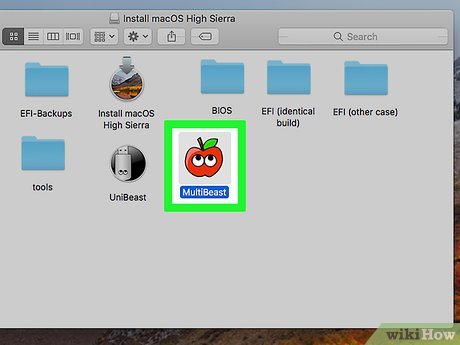


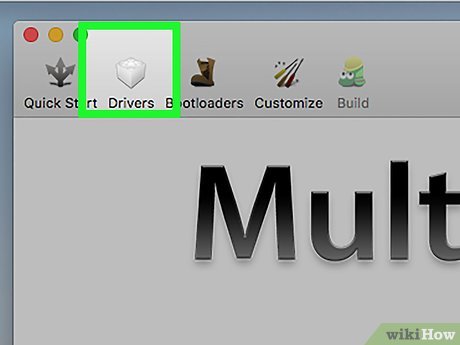











 How to Free Up Hard Disk Space on OS X with Squeeze
How to Free Up Hard Disk Space on OS X with Squeeze How to Use Screen Sharing in OS X Leopard
How to Use Screen Sharing in OS X Leopard How to Make Phone Calls with Yosemite
How to Make Phone Calls with Yosemite How to Clear System Cache on PC or Mac
How to Clear System Cache on PC or Mac How to Avoid or Remove Mac Defender Malware from Mac OS X V10.6 or Earlier
How to Avoid or Remove Mac Defender Malware from Mac OS X V10.6 or Earlier How to Use SnapNDrag
How to Use SnapNDrag